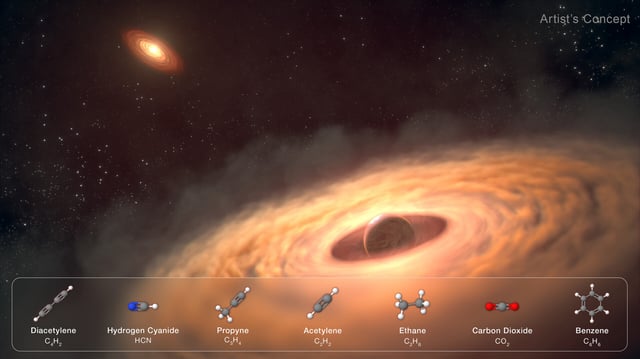Overview
- JWST's MIRI medium-resolution spectrograph detected seven carbon-bearing molecules in the circumplanetary disk, including acetylene, benzene, diacetylene, propyne, ethane, hydrogen cyanide, and carbon dioxide.
- The planet–disk system lies roughly 46 billion miles (about 74 billion km) from the young host star, establishing that the material is distinct from the star’s accretion disk.
- Researchers isolated the planet’s faint signal from stellar glare using high-contrast methods, enabling the first direct chemical and physical measurements of a circumplanetary disk.
- The study, led by Gabriele Cugno and Sierra L. Grant and published in The Astrophysical Journal Letters, probes material accreting onto the massive companion CT Cha b about 625 light-years away.
- No moons are seen in the Webb data, and the team plans a follow-up Webb survey over the next year to assess the diversity of circumplanetary disks and their chemistries.
